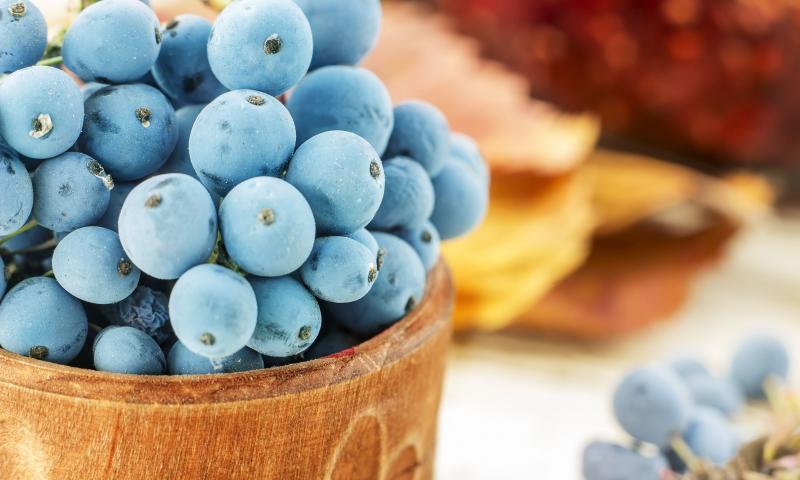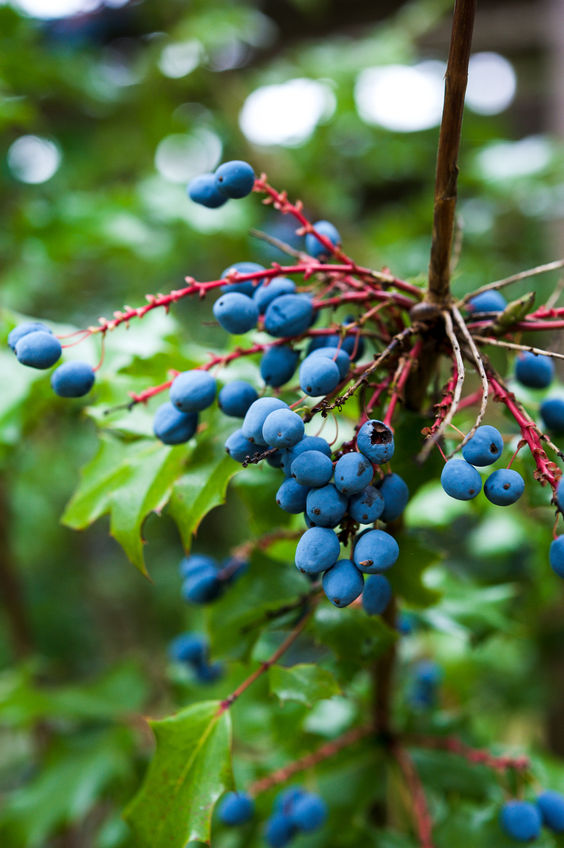 />
/>
LATIN NAME: Mahonia aquifolium
FAMILY: Berberidaceae
GENUS: Mahonia
COMMON NAMES: Oregon-grape or Oregon grape
ORIGIN: native to western North America
 BOTANICAL INFORMATION: Evergreen shrub of up to 1m high, forming a thicket. The bark on young shoots is pinkish-gray, old shoots are brown-gray, with longitudinal striae. Leaves are complex, odd-pinnate, of up to 15-20 cm length. Flowers in diameter are about 8 mm, collected in multicolor brushes, of light yellow, bright color often with a lemon tint. Berries are oblong-elliptical, up to 10 mm long, covered with fluff, with 2-8 seeds, sweet and sour. Seeds are oblong, 4.5 mm long, chestnut and shiny. Flowering period is in April-May. Fruits ripen in August-September.
BOTANICAL INFORMATION: Evergreen shrub of up to 1m high, forming a thicket. The bark on young shoots is pinkish-gray, old shoots are brown-gray, with longitudinal striae. Leaves are complex, odd-pinnate, of up to 15-20 cm length. Flowers in diameter are about 8 mm, collected in multicolor brushes, of light yellow, bright color often with a lemon tint. Berries are oblong-elliptical, up to 10 mm long, covered with fluff, with 2-8 seeds, sweet and sour. Seeds are oblong, 4.5 mm long, chestnut and shiny. Flowering period is in April-May. Fruits ripen in August-September.
CHEMICAL COMPOSITION
The fruits of mahonia contain sugars, tannins, organic acids, P-active and pectin substances, ascorbic acid.
The roots include isoquinoline alkaloids (berberine, hydrastin, berbamin), palmitin, zinc, copper, silicon, manganese, sodium. There are tannins, flavonoids, pectins, organic acids and some microelements (potassium, copper, zinc, etc.) in the bark and branches of the plant.
OREGON GRAPE TINCTURE
The recipe: Pour 100 ml of vodka over 10 gr of crushed Mahonia bark, infuse for 7 days in dark cool place, then strain. Take 5-15 drops diluted with water.
“You cannot eat a cluster of grapes at once, but it is very easy if you eat them one by one”
Jacques Roumain
*This article is for informational purposes only. We suggest consulting with a physician before using these or any other herbal supplements.
